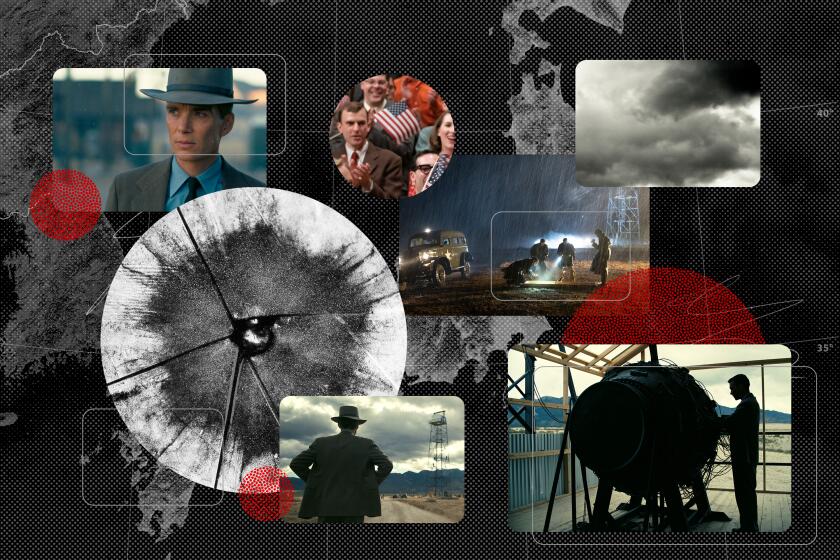How ‘Oppenheimer’s’ atomic bomb scene was created (without CGI)
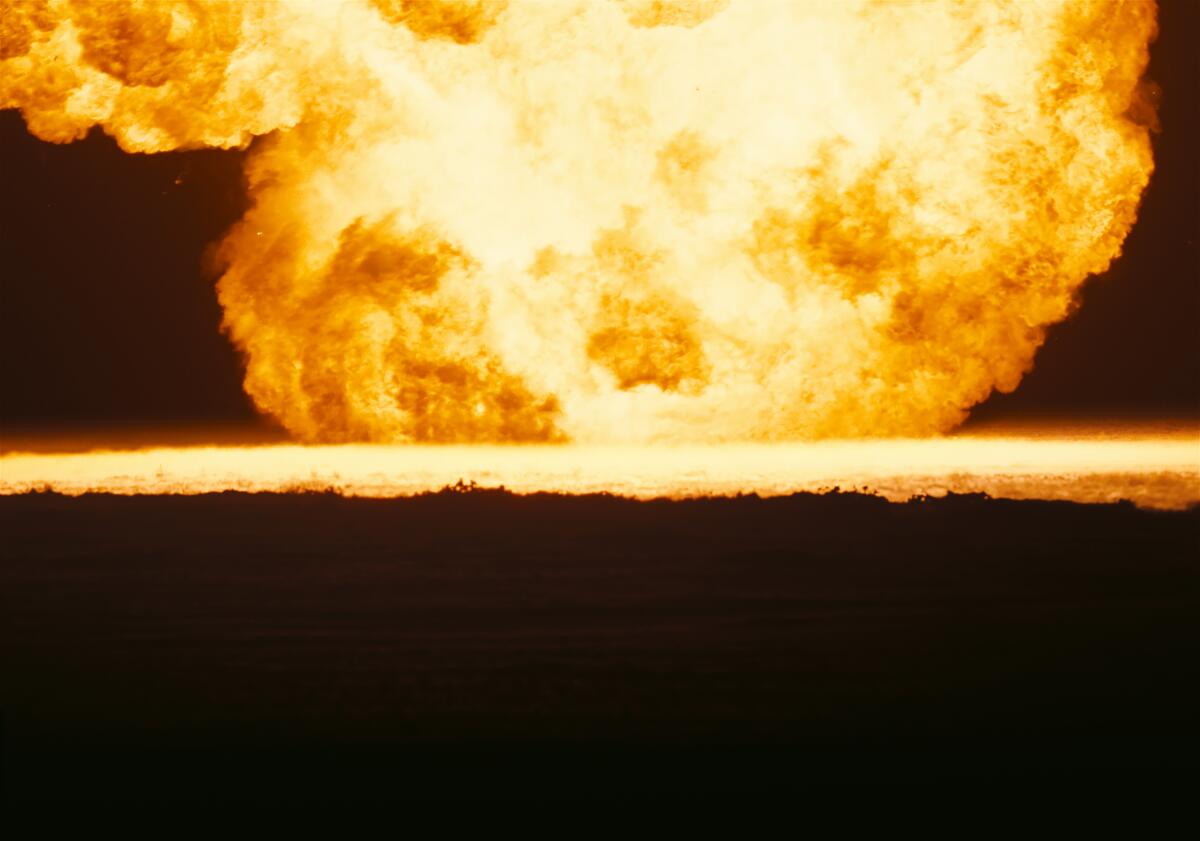
- Share via
Andrew Jackson won a visual effects Oscar for Christopher Nolan‘s “Tenet” and supervised the VFX for “Dunkirk,” so he already knew about the director’s passion for capturing spectacle “in-camera” rather than relying on computer-generated imagery. Still, when Nolan sent him his “Oppenheimer” script two years ago, Jackson had no idea that he’d soon be tinkering with highly explosive chemicals, ping-pong ball simulations and giant vats of pellet-filled water.
“Chris said it was important to capture the images on film, and I like constraining the creative approach within these limits,” Jackson says. “It forces you to find solutions that you wouldn’t necessarily come up with in the CG world, where anything is possible.”
One big challenge: Jackson needed to construct physical visualizations of subatomic activity leading up to the world’s first thermonuclear bomb explosion. To that end, Jackson convened with special effects supervisor Scott R. Fisher in Los Angeles and embarked on weeks of fervid experimentation. Jackson, speaking from his home in Sydney, wryly notes, “The guys who work in Scott’s workshop are engineering [types], so it’s a precise, organized, tidy sort of world. Then I come in trying like five different things at the same time, over here, over there.”
Diving into an explosive episode of 20th century history that launched the nuclear age, director Christopher Nolan unleashes the most ambitious film of his career.
Jackson and Fisher churned out dozens of analog-based scenarios. “Our criteria was 1) the idea had to be simple and quick to make,” Jackson says. “2) it had to relate to lines in the script. And 3) it had to present well on film. That was it, really, so we just started building things, filming them on iPhones or digital cameras and collecting a whole library of ideas.”
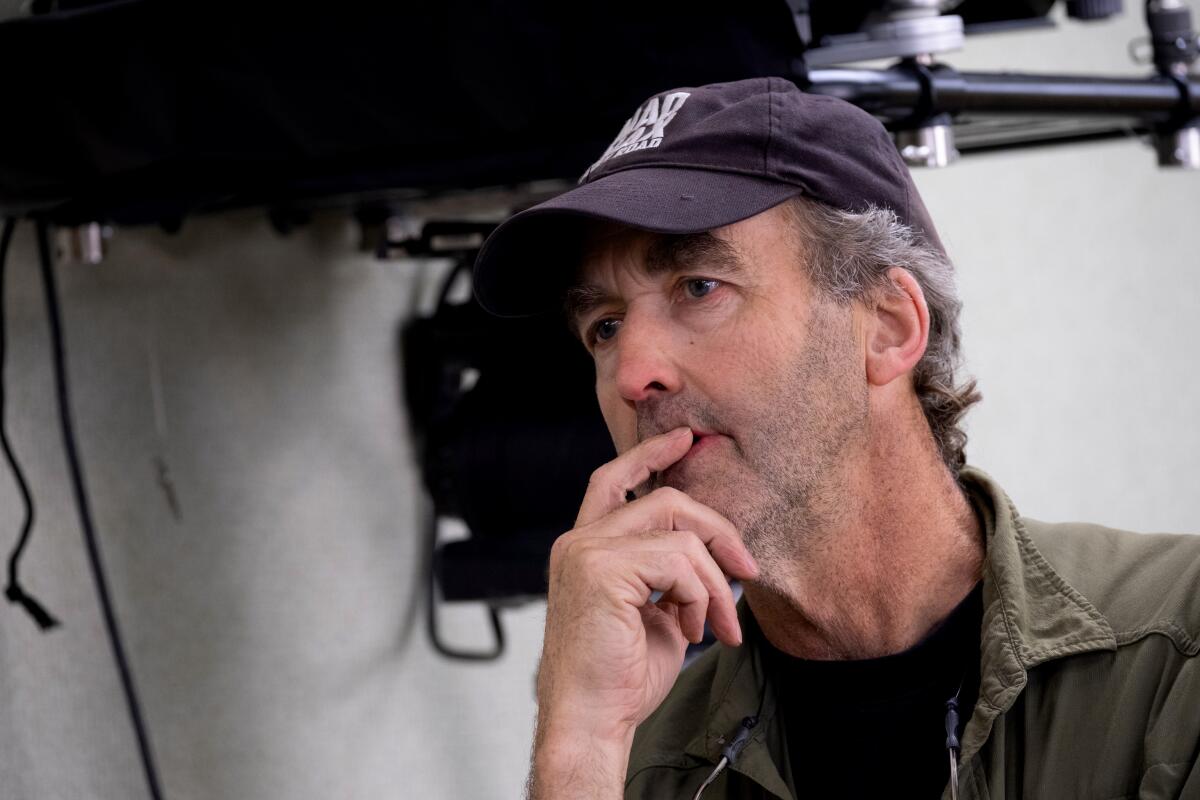
Trial and error led to numerous dead-ends. For example, an exploding ping-pong balls demonstration failed to pass muster with Nolan. “Chris thought it was just too literal,” says Jackson, who soon discovered a more compelling chain-reaction dramatization courtesy of thermite, a simple compound made from aluminum powder and iron oxide.
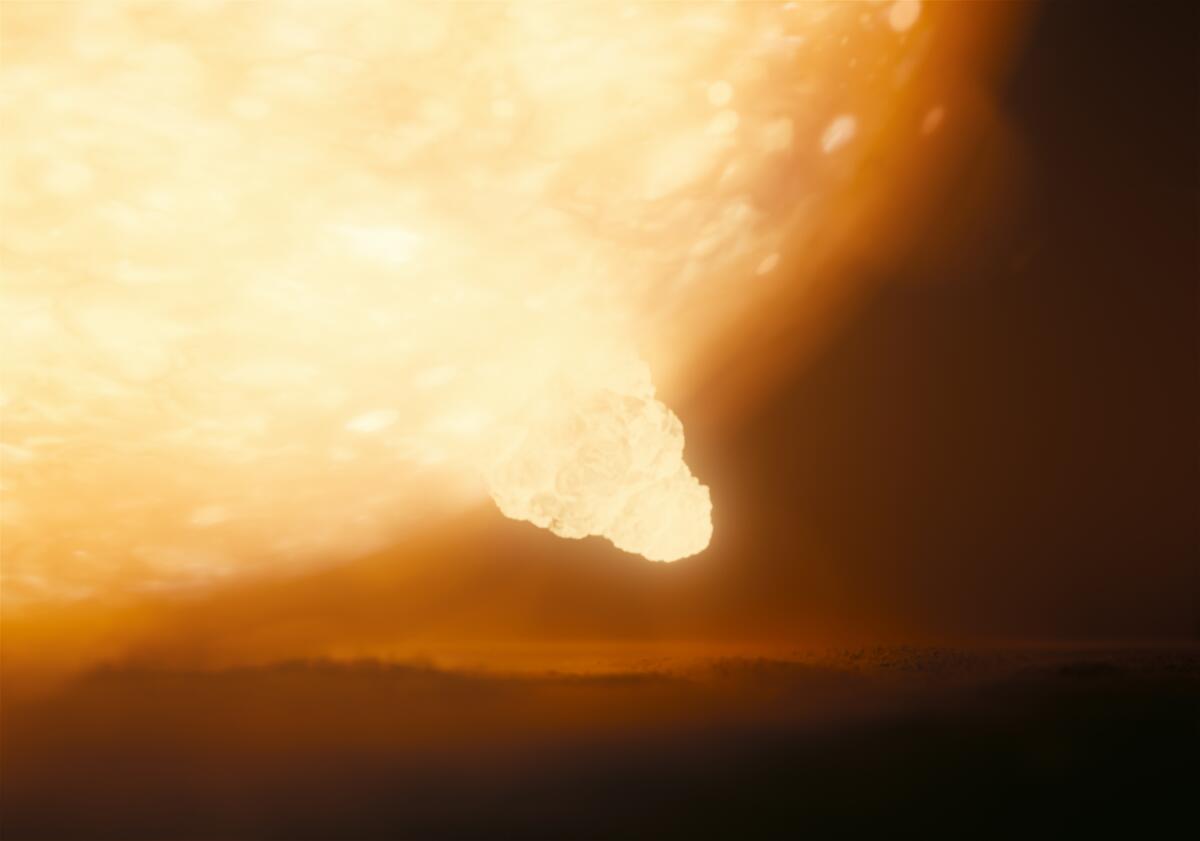
“When you set fire to thermite, it starts a chemical reaction that burns at 2000 degrees Celsius [3632 degrees Fahrenheit] and turns into molten iron,” Jackson explains. “To contain the reaction, we set a flower pot on a stand and covered the hole at the bottom. Once the thermite turned into molten iron, it burned through that hole and poured into a sandbox below, so you had droplets of molten iron hitting the surface and exploding. It was magnificent and incredibly bright. We were all blown away.”
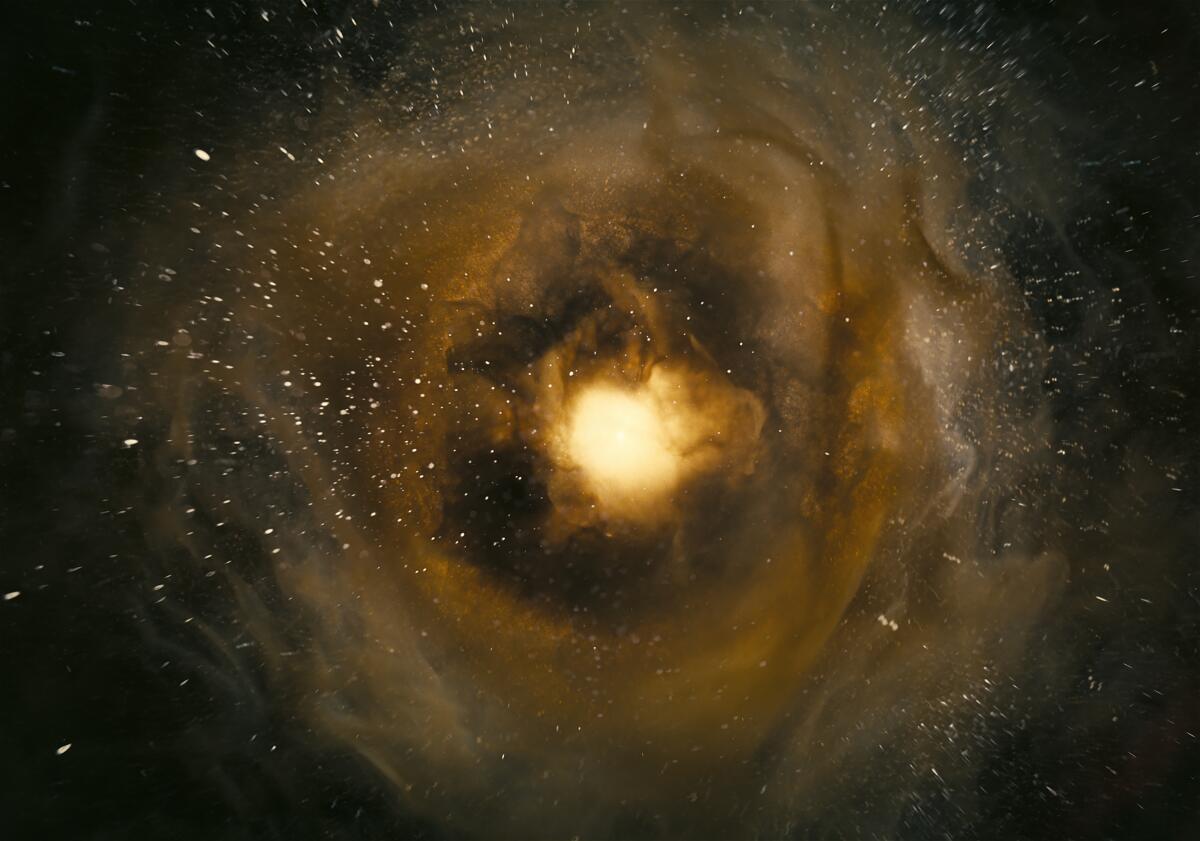
For other astrophysical sequences, Jackson and company filled circular water tanks with tiny metallic particles. Cinematographer Hoyte van Hoytema‘s camera department invented a rig that filmed particles from within the swirling mass. “They built this long, narrow probe lens for the Imax camera with a rubber sleeve sealed around the end so it could poke right into the liquid and give you this sense of immersion. We stirred the water, waited several minutes for it to slow down and, when the motion was just right, we filmed the liquid with the camera lens traveling into that world of moving particles.”

The workshop sessions yielded vivid visuals evoking subatomic and intergalactic realms, but the movie’s big Trinity test recreation materialized larger than life on the “Oppenheimer” set in New Mexico. There, filmmakers sought to mimic the 1945 atomic blast supervised by J. Robert Oppenheimer (Cillian Murphy) and his fellow scientists. After researching archival footage, Jackson collaborated with Fisher on an ingenious way to safely approximate the bomb’s impact. “We decided to film multiple explosions at high speeds as big as we could possibly make them. When we slowed down the explosions [footage] in postproduction, we were able to make the explosions feel much bigger.”
On detonation day, cast and crew gathered as pyrotechnicians set up drums of fuel that would be ignited and propelled into the air. Jackson says, “There was this debate about ‘How close can you safely get to the explosions with cameras?’ For the first explosion, you never really know 100%, so we just had to take Scott’s advice, ‘You’ll be OK here.’ We did seven or eight explosions and had several cameras running each time, which gave us a lot of material to work with.” Was he relieved to still be standing at the end of the shooting day? Jackson simply says, “We were quite pleased with the way it looked.”
Christopher Nolan’s movie has no interest in reducing the atomic bombings of Japan to a trivializing, exploitative spectacle, despite what some would want.
While Jackson has supervised his share of CGI-powered projects, including “Mad Max: Fury Road,” for which he earned an Oscar nomination, the VFX supervisor reserves a special fondness for Nolan’s analog aesthetic. Describing his early days as a kid growing up on a secluded farm in Australia, Jackson says, “My childhood was all about building models and miniature flying planes. For me, being in [Scott’s] workshop felt like putting on a pair of old shoes.”
More to Read
From the Oscars to the Emmys.
Get the Envelope newsletter for exclusive awards season coverage, behind-the-scenes stories from the Envelope podcast and columnist Glenn Whipp’s must-read analysis.
You may occasionally receive promotional content from the Los Angeles Times.

